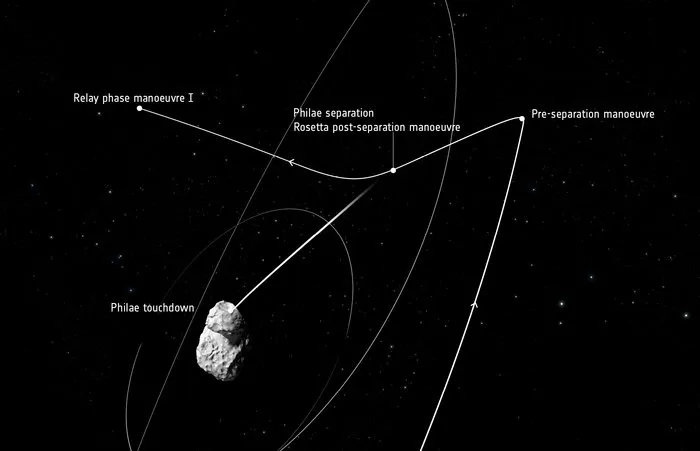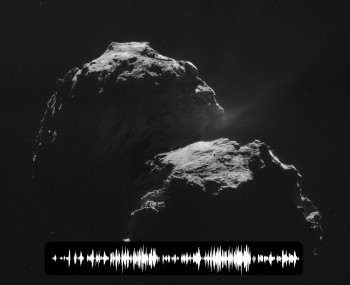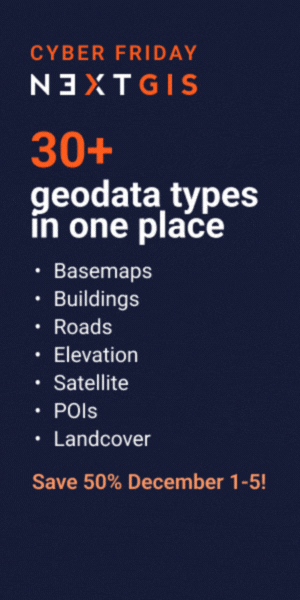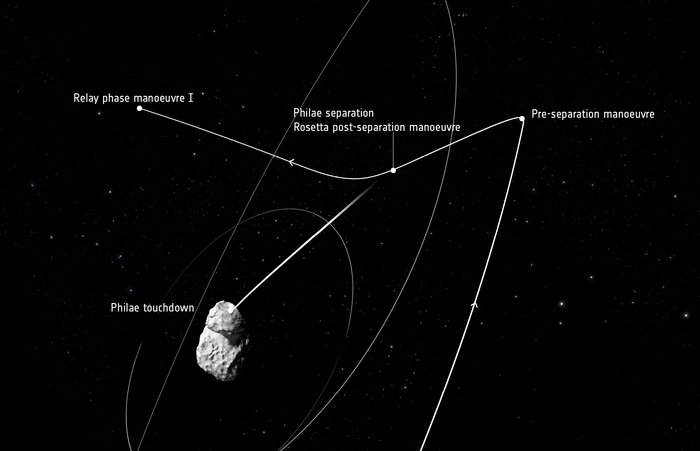
Philae about to land on comet
Several times we reported on the Rosetta mission run by ESA. In August 2014 the spacecraft drew to within 100 km of the Comet 67P/Churyumov–Gerasimenko. Tomorrow, 12 November, Rosetta’s Philae is planned to make the first-ever landing on a comet. At a planned time of 09:03 GMT (10:03 CET) when Rosetta will be approximately 22km away from the comet, the lander Philae will be separated and start to approach the surface of the comet. The touch down should follow around seven hours later, at 16:02 GMT (17:02 CET).
Due to its small size the comet has a reduced gravity. Therefore, the manoeuvre of Philae takes such a long time as the lander has to approach the comet slowly, at around walking pace, in order not to bounce when it touches the surface. Special installations will additionally keep the lander at the surface: a thruster at the upper side pushes the lander towards the ground, as soon it is landed screws will drill into the soil from the three supportng legs and fix the craft, furthermore two harpoons will additionally anchor Philae.
Over twenty years scientists have been working on that mission and over 10 years Rosetta has been flying through space. The missions is expected to clarify if water on earth derives from ice of comets and even if elementary components as organic compounds came with comets to our planet Earth.
Some nice side effects of the mission: Instruments on the space craft recorded some sound, far below human hearing, when it approached the Comet 67P/Churyumov–Gerasimenko in August this year (read here).
Follow this historic event via live updates posted in the following channels:
http://new.livestream.com/esa/cometlanding
View the mission’s website:
FB
https://www.facebook.com/RosettaMission?_fb_noscript=1

The sounds of the space. Source: ESA
Did you like this post? Read more and subscribe to our monthly newsletter!






